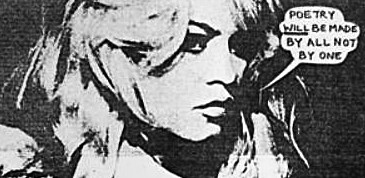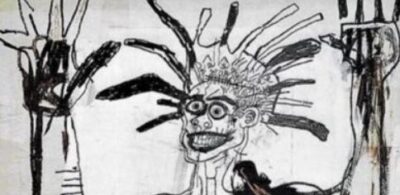When Art Becomes Inhuman
The article When Art Becomes Inhuman was written by conservative Karl Zinsmeister for a 2002 edition of The American Enterprise magazine. Zinsmeister’s commentary was a general condemnation of modern art, with a sharp focus upon the extremes of postmodernism – which he described as a “left-wing cause.”
Zinsmeister sarcastically declared, “Surely you’ve noticed that the art smarties never lay out Cuban flags for gallery visitors to trample on, or decorate Martin Luther King’s picture with elephant dung.” He mocked the mental state of abstract artists by saying, “mightn’t it tell us something that Willem de Kooning’s abstract expressionist compositions didn’t change in quality after he lost his mind to Alzheimer’s disease?”
Zinsmeister even compared gays to child molesters when he wrote that works singing the praises of “voyeurism, drugs, homosexuality, and pedophilia” filled the nation’s trendy art galleries.
You might think Karl Zinsmeister to be just another intransigent stick-in-the-mud who takes the furthermost right-wing position on every social issue, a narrow-minded individual to be dismissed and forgotten – and you might be right, save for the fact that he’s a newly appointed member of the Bush administration.
In May of 2006, President Bush picked the 47 year old Karl Zinsmeister as his principal domestic policy adviser. Over the years Zinsmeister has played a leading role in America’s “culture wars,” working for the past 12 years as editor in chief for The American Enterprise magazine. That glossy periodical is associated with the American Enterprise Institute, a think tank for neoconservatives that has done much to shape the policies of the Bush White House.
Perhaps President Malaprop first noticed Zinsmeister by way of a comic book published by Marvel Comics in 2005. Combat Zone: True Tales of GI’s in Iraq, was written by none other than Karl Zinsmeister, and supposedly based on his experiences as an “embedded” journalist with the American 82nd Airborne in Iraq.

I mention Zinsmeister’s political views because they have a direct correlation to his likes and dislikes concerning art, and a man in such an influential position should be carefully listened to. It comes as no surprise that conservatives and traditionalists have applauded Zinsmeister’s cutting remarks against modern art, he has a powerful mass base that represents a populist backlash against contemporary art.
The Art Renewal Center (ARC), those champions of all things conservative in art, reprinted Zinsmeister’s article in its entirety – though they neglected to inform their readership of the author’s neo-conservative political orientation or the fact that he works for the Bush administration (the ARC has since removed Zinsmeister’s article from its archives, but the piece was reprinted on the Free Republic website in 2003).
I’m not a supporter of the postmodernist super-stars of the art world Zinsmeister attacks in his article, and any regular reader of this blog knows I’m a staunch critic of the postmoderns. But where the right sees politically correct left wingers bent on destroying western heritage, one can also see apathetic apolitical intellectuals who are socially disengaged. There are few sectors of society less interested in political theory and activism than the contemporary art world, as a cursory view of international art web sites and web logs makes perfectly clear.
It is natural for art to overthrow the established order, and the name for such upheaval is progress. Historically artists have always been visionaries ahead of their times and at odds with the status quo. The Dadaists, Cubists, Surrealists, Expressionists, Constructivists and Abstract artists all hurled their contempt at comfortable society and we’re better off for it.
But these eruptions didn’t take place simply because a small group of artists fancied a new style, the ruptures were necessary because established orders became ossified and essentially had nothing left to offer. We have reached another such point in time.
While the spirit and motivation of the aforementioned groups was revolutionary in intent, and a similar stance may have once moved today’s early postmodernists, no such spirit stirs in them presently. They merely clamor for wealth, press, accolades, and awards from the established circles of power of which they are a part. Postmodernism is due for an unseating, but Zinsmeister and his neocons are not the ones to oust it.
Zinsmeister and his followers decry avant-garde art as the workings of an ultra-liberal and politically correct art establishment that does its best to “shock, flout, insult, and otherwise chuck rocks at polite society.” Much of that is true.
But it is hypocritical and duplicitous for Zinsmeister to condemn modern art for its supposed inhumanity, while at the same time supporting a presidency that has sanctioned torture, preemptive war and the abrogation of the constitutional rights of American citizens. In barbarous times there can be no polite society, and Zinsmeister evidently cannot understand, or refuses to admit, that “art becomes inhuman” only when society itself has become a horrid charnel house.




